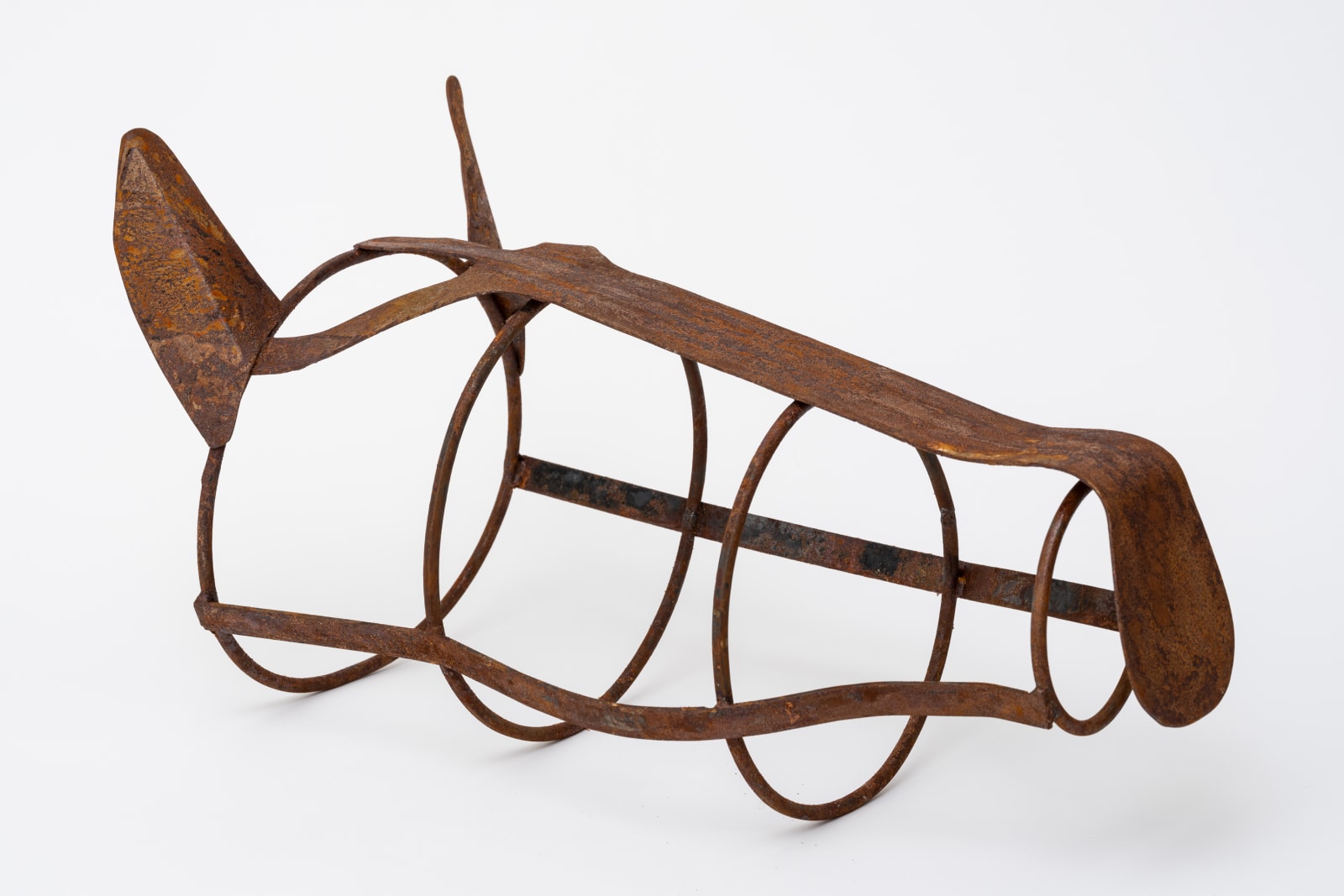
Gray Wielebinski
Shame Mask, 2021
Oxidised steel
33.4 x 29.9 x 61 cm
13 1/8 x 11 3/4 x 24 1/8 in
13 1/8 x 11 3/4 x 24 1/8 in
Wielebinski explores relationships to animals, particularly our tendency to love them mainly symbolically or through anthropomorphized lenses. Horses are often seen as representative of machismo, cowboys, the possibilities of “going...
Wielebinski explores relationships to animals, particularly our tendency to love them mainly symbolically or through anthropomorphized lenses. Horses are often seen as representative of machismo, cowboys, the possibilities of “going west,” and rugged individualism in American culture. Complicating traditional narratives, Wielebinski speaks to our obsession with dominating nature, the mundanity and everyday cruelty of American life, and the impulse to repeat the same histories over again.
Wielebinski’s 'Shame Mask' (2021) visually draws from medieval shame masks – a type of embarrassing punishment device used during the middle ages. Made from metal, they were made to be heavy and uncomfortable for the wearer. They were often made in the shape of animals; a donkey would signify foolishness and a pig nose would indicate the person was dirty. Wolf head masks of shame would be used on those whose language was vulgar or abusive. The aim of the shame masks was to punish and ridicule the offender in order to control behaviour.
‘Ultimately, this work is about reckoning with our relationships to the earth and the world around us, to our own mythologies and histories we’ve been taught and perpetuate either through belief or ignorance, the iconographies, statues, and heroes we hold up, the systems we don’t question and have been told are inevitable, and the need to broaden our scope of vision and see beyond ourselves in order to recognize the potential and necessity of working collectively and to greater goods rather than only look out for ourselves, or we are doomed to continue to repeat our same mistakes ad infinitum.’ (Wielebinski, 2021)
Wielebinski’s 'Shame Mask' (2021) visually draws from medieval shame masks – a type of embarrassing punishment device used during the middle ages. Made from metal, they were made to be heavy and uncomfortable for the wearer. They were often made in the shape of animals; a donkey would signify foolishness and a pig nose would indicate the person was dirty. Wolf head masks of shame would be used on those whose language was vulgar or abusive. The aim of the shame masks was to punish and ridicule the offender in order to control behaviour.
‘Ultimately, this work is about reckoning with our relationships to the earth and the world around us, to our own mythologies and histories we’ve been taught and perpetuate either through belief or ignorance, the iconographies, statues, and heroes we hold up, the systems we don’t question and have been told are inevitable, and the need to broaden our scope of vision and see beyond ourselves in order to recognize the potential and necessity of working collectively and to greater goods rather than only look out for ourselves, or we are doomed to continue to repeat our same mistakes ad infinitum.’ (Wielebinski, 2021)
Exhibitions
Now I am a Lake, Public Gallery, London, UK, 2022Oil and Water, Hales London, London, UK, 2021